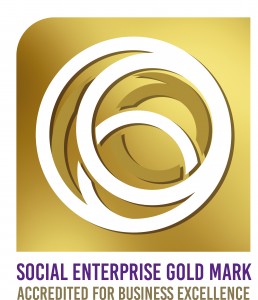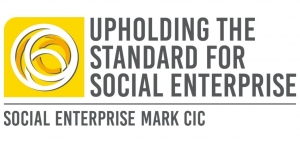Social Enterprise Gold Mark Assessment Framework
How to achieve the symbol of excellence for social enterprise
 The Social Enterprise Gold Mark assessment framework has been developed for social enterprises to show evidence on how they either strive to achieve or have achieved the various criteria.
The Social Enterprise Gold Mark assessment framework has been developed for social enterprises to show evidence on how they either strive to achieve or have achieved the various criteria.
The Gold Mark is a tool for continuous improvement, and once your assessment is complete, you will receive a report that highlights how successful you have been in meeting Gold Mark standards; this highlights any key strengths and suggests areas for development that you can work with in building upon these.
You are not required to meet all aspects of the framework, but should be able to demonstrate compliance with a wide variety of the items referred to. If you would like to view and discuss the eligibility requirements in more detail, then please contact us and we will arrange for an assessor to call you.
The criteria of the Social Enterprise Gold Mark builds upon the six criteria of the original Social Enterprise Mark (which also form part of the Gold Mark assessment). A summary of the Gold Mark criteria follows in the table below.
Please note: all references to social objectives, and other similar references to social impact, social value etc., also relate to and concern any environmentally related objectives that are core objectives within your strategic social and community mission (or relate to different operational policies and outputs).
| Criterion G | Robust Governance | • The primary purpose of a social enterprise is to pursue social objectives: this may be directly achieved through its trading activities and/or evident through how profits generated from trading are primarily applied in supporting social objectives. • Robust governance means being able to demonstrate how this purpose is reflected in top-level governance arrangements, business planning and objective setting. • A good social enterprise should be able to show that there is an informed, capable, and accountable leadership, supported by appropriate structures that contribute towards the effective management of people and business interests. |
| Criterion H | Effective Stakeholder Engagement | • A social enterprise primarily exists to deliver social benefits to specific groups of people and/or the general communities it works in. There may also be people and agencies a social enterprise works with in delivering these outcomes. These social beneficiaries and delivery associates are its stakeholders. • Effective stakeholder engagement is evident through how a social enterprise can show how different stakeholders have influenced plans and decision-making, helping ensure social objectives are being effectively targeted and served. • A good social enterprise should be able to show how it has identified and prioritised different stakeholder groups, along with how they are involved in governance and decision-making structures. |
| Criterion I | Ethical and Good Business Practice | • A good social enterprise will employ ethical and effective business practices that reinforce its social values and contribute to the positive social differences it creates. |
| Criteron J | Financial Transparency | • A social enterprise exists to maximise the social impact and value it can create, above that of individual shareholder/member profits. • A good social enterprise is financially transparent so that it may be held accountable to its different stakeholders, through demonstrating fiscal responsibility, business viability, as well as showing how annual income and accumulated profits have been deployed. • This includes reporting on investments in support of social purposes but also concerns how a social enterprise can show it manages finances responsibly and in ways that reinforce trading sustainability, which underpins the capability to create regular social benefit. |
| Criterion K | Reporting Social Impact | • The primary purpose of a social enterprise is to pursue social objectives: this may be directly achieved through its trading activities and/or evident through how profits generated from trading are primarily applied in supporting social objectives. • A good social enterprise will regularly monitor and report on the social impact it creates – in terms of the scope of its social outputs and the benefits these deliver for people and communities. • Measuring and reporting on these social outcomes provides transparency for stakeholders and should inform ongoing plans and developments. |
The Social Enterprise Gold Mark Assessment Process
Your assessment for the Social Enterprise Gold Mark is designed to be both a comprehensive and engaging process, examining various aspects of your business operation, the social and environmental value and impact you are achieving, and inviting contributions from your workforce.
When you are ready to apply, simply complete the short registration form and we will support you through the process, which generally comprises four key steps:
- Completing the Review Form (available on request). You must use the form provided. The questions address the key elements of best practice covered by each of the Gold Mark criterion and ask you to provide a narrative summarising how your organisation meet the criteria.
- Completing a Employee/Stakeholder Survey* and achieving the required response rate: this varies according to the number of employees and it could include other stakeholders. Instructions for the Employee/Stakeholder Survey will be sent to you separately.
- Employee/Stakeholder interviews. These provide corroboration and help build upon the evidence from the Review Form and Survey. The number of interviews may vary according to the size and complexity of your organisation, but usually comprise a mix of individual and group interviews with people across a range of roles and responsibilities.
- Post Assessment Report and Feedback. Your assessor will produce a report for the Social Enterprise Mark Accreditation Panel, summarising how far Gold Mark evidence requirements have been met. The Panel make a final judgement on this and you will then be notified of their decision and receive a copy of the report. A meeting to discuss this with SEMCIC representatives will then be arranged with you.
*The employee/stakeholder survey is not mandatory but doing so provides additional evidence which can make the difference in determining whether or not Gold Mark standards have been met
Register your interest today
Complete the short registration form and a member of our friendly team will be in touch within 2 days to discuss the next steps.


